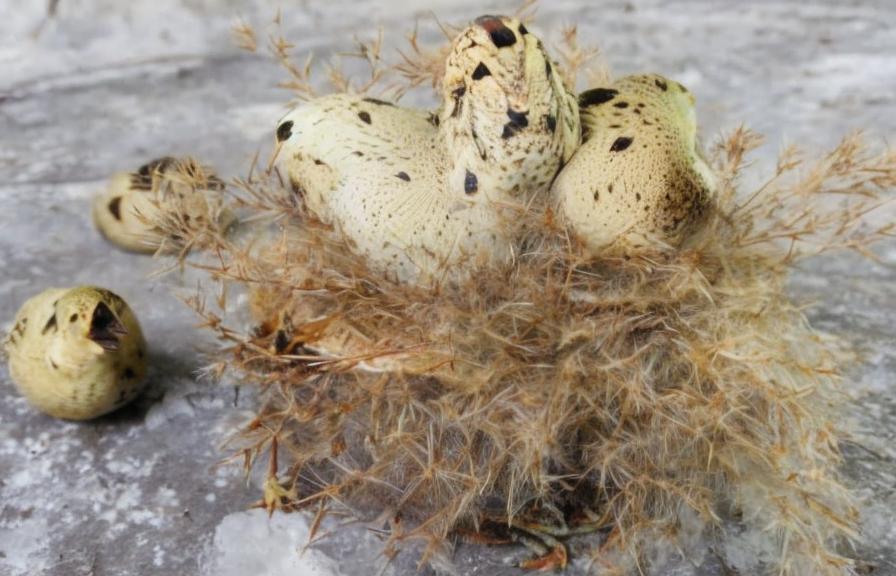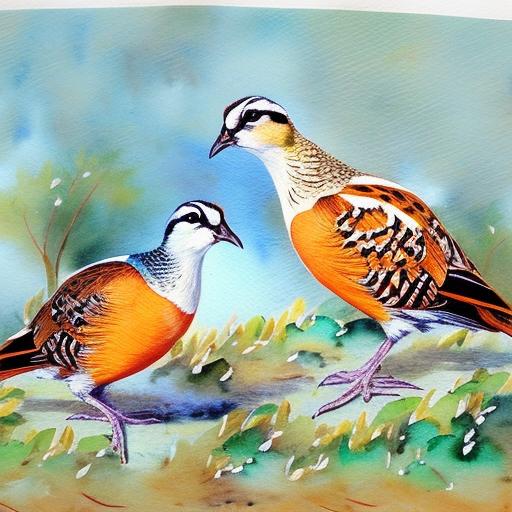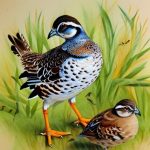Quail bird breeding is a fascinating and rewarding endeavor that requires a good understanding of the birds’ behavior, biology, and breeding habits. Quails are small ground-dwelling birds that belong to the family Phasianidae. They are known for their rapid growth, high egg production, and delicious meat, making them a popular choice for breeders and farmers. Understanding the basics of quail bird breeding is essential for successful and sustainable breeding practices.
Quails are known for their prolific breeding habits, with females laying up to 300 eggs per year. They reach sexual maturity at around 6-8 weeks of age, making them an ideal choice for breeders looking for a quick turnaround. Quails are also known for their ability to adapt to various environmental conditions, making them suitable for breeding in different climates and regions. Understanding the breeding behavior of quails is crucial for creating a conducive breeding environment and ensuring the health and well-being of the birds.
Quail bird breeding also requires an understanding of the different breeds and varieties available. There are several species of quails, including the Japanese quail, Coturnix japonica, and the Bobwhite quail, Colinus virginianus. Each species has its own unique characteristics and breeding requirements, so it’s important to choose the right breed for your breeding program. Understanding the specific needs and traits of different quail breeds is essential for successful breeding and maintaining genetic diversity within your breeding stock.
Key Takeaways
- Quail birds are prolific breeders and can start laying eggs as early as 6-8 weeks old.
- When selecting quail breeding stock, look for healthy birds with good body conformation and strong genetics.
- Provide quail breeding stock with adequate housing, including nesting boxes and protection from predators.
- A balanced diet is crucial for quail breeding success, including high-protein feed and access to grit for digestion.
- Proper incubation and hatching conditions are essential for successful quail breeding, including maintaining the right temperature and humidity levels.
Selecting the Right Quail Breeding Stock
Selecting the right quail breeding stock is crucial for establishing a successful breeding program. The breeding stock refers to the birds that will be used for reproduction and producing offspring. When selecting quail breeding stock, it’s important to consider factors such as health, genetics, and productivity. Choosing healthy and genetically diverse breeding stock is essential for producing strong and resilient offspring.
When selecting quail breeding stock, it’s important to choose birds that are free from any genetic defects or hereditary diseases. Breeding from unhealthy or genetically compromised birds can lead to a decline in the overall health and productivity of the offspring. It’s also important to select birds with good conformation and physical traits that are desirable for your breeding goals. This may include traits such as size, color, and feather quality, depending on your specific breeding objectives.
In addition to health and genetics, productivity is also an important factor to consider when selecting quail breeding stock. Look for birds that exhibit high egg production, rapid growth, and good feed conversion rates. These traits are indicative of strong genetic potential and will contribute to the overall success of your breeding program. Selecting birds with high productivity will help ensure a steady supply of offspring for meat or egg production, depending on your breeding goals. Overall, selecting the right quail breeding stock is essential for establishing a healthy and productive breeding program.
Housing and Care for Quail Breeding
Proper housing and care are essential for the health and well-being of quail breeding stock. When setting up housing for quail breeding, it’s important to provide a clean, well-ventilated, and secure environment that meets the specific needs of the birds. Quails are ground-dwelling birds that require adequate space to move around and exhibit natural behaviors such as dust bathing and foraging. Providing appropriate housing and care is essential for ensuring the health and productivity of quail breeding stock.
Quails can be housed in a variety of structures, including cages, aviaries, or outdoor pens. When designing housing for quail breeding, it’s important to consider factors such as space requirements, ventilation, temperature control, and protection from predators. Providing adequate space is essential for preventing overcrowding and reducing stress among the birds. Good ventilation is important for maintaining air quality and preventing respiratory issues. Temperature control is also crucial, as quails are sensitive to extreme temperatures and require a comfortable environment for optimal health and productivity.
In addition to housing, providing proper care for quail breeding stock involves providing a balanced diet, clean water, and regular health checks. Quails require a diet that is high in protein to support their rapid growth and egg production. It’s important to provide a commercial quail feed or a balanced diet that meets their nutritional needs. Clean water should be readily available at all times to prevent dehydration and ensure proper hydration. Regular health checks are also important for monitoring the overall health of the birds and identifying any potential issues early on. Providing proper housing and care is essential for maintaining the health and productivity of quail breeding stock.
Quail Breeding Nutrition and Feeding
Nutrition and feeding play a crucial role in the success of quail breeding programs. Providing a balanced diet that meets the nutritional needs of quails is essential for supporting their rapid growth, high egg production, and overall health. When it comes to nutrition and feeding for quail breeding, it’s important to consider factors such as protein requirements, energy needs, vitamins, minerals, and feeding strategies.
Quails have high protein requirements, especially during periods of rapid growth and egg production. It’s important to provide a commercial quail feed or a balanced diet that contains high-quality protein sources such as soybean meal, fish meal, or meat meal. Protein is essential for supporting muscle development, feather quality, and egg production in quails. In addition to protein, quails also require adequate energy from sources such as grains, seeds, and fats to support their metabolic needs and overall growth.
In addition to protein and energy, providing essential vitamins and minerals is important for maintaining the overall health and productivity of quail breeding stock. Vitamins such as A, D, E, and B-complex play crucial roles in supporting immune function, bone development, and reproductive health in quails. Minerals such as calcium, phosphorus, and trace minerals are also essential for supporting bone strength, eggshell quality, and overall metabolic function in quails.
Feeding strategies for quail breeding should take into account factors such as age, reproductive status, and seasonal variations in nutritional needs. It’s important to provide a consistent feeding schedule that meets the specific nutritional requirements of quails at different stages of development. Monitoring feed consumption, body condition, and egg production can help ensure that quails are receiving adequate nutrition for optimal health and productivity. Overall, nutrition and feeding play a crucial role in the success of quail breeding programs.
Breeding Quail Birds: Incubation and Hatching
Breeding quail birds involves the process of incubating eggs and hatching chicks to produce offspring for meat or egg production. Understanding the basics of incubation and hatching is essential for successful reproduction and maintaining a healthy breeding stock. When it comes to breeding quail birds, it’s important to consider factors such as incubation methods, temperature control, humidity levels, egg turning, and hatching management.
Incubation is the process of keeping fertilized eggs at optimal conditions to allow them to develop into viable embryos. Quail eggs typically have an incubation period of 17-18 days before hatching. There are several methods of incubating quail eggs, including natural incubation by broody hens or artificial incubation using commercial egg incubators. Natural incubation involves allowing broody hens to sit on a clutch of eggs to keep them warm and provide the necessary conditions for embryonic development. Artificial incubation involves using specialized egg incubators that control temperature, humidity levels, and egg turning to simulate the conditions required for embryonic development.
Temperature control is crucial during incubation to ensure proper embryonic development and hatchability of quail eggs. The optimal temperature for incubating quail eggs is around 99-100 degrees Fahrenheit. Maintaining consistent temperature levels throughout the incubation period is essential for preventing developmental issues or hatch failures. Humidity levels also play a crucial role in incubation, as they affect eggshell moisture levels and embryo development. The recommended humidity level for incubating quail eggs is around 50-60% relative humidity.
Egg turning is an important aspect of incubation that helps prevent embryonic adhesion to the eggshell membrane and ensures even heat distribution within the eggs. Quail eggs should be turned several times a day during the incubation period to promote proper embryonic development and hatchability. Hatching management involves providing a clean and warm environment for newly hatched chicks to dry off and acclimate to their surroundings. Proper incubation and hatching management are essential for successful reproduction and maintaining a healthy quail breeding stock.
Managing Quail Breeding Challenges

Managing quail breeding challenges involves addressing common issues such as disease outbreaks, reproductive problems, genetic disorders, environmental stressors, and predator threats. Understanding how to identify and manage these challenges is essential for maintaining the health and productivity of quail breeding stock.
Disease outbreaks can have devastating effects on quail breeding programs if not properly managed. Common diseases that affect quails include coccidiosis, infectious bronchitis, avian influenza, Marek’s disease, and Newcastle disease. Implementing biosecurity measures such as quarantine protocols, vaccination programs, sanitation practices, and regular health checks can help prevent disease outbreaks and minimize their impact on quail breeding stock.
Reproductive problems such as low fertility rates or poor hatchability can also pose challenges for quail breeders. Factors such as age, nutrition, genetics, environmental stressors, or improper incubation practices can contribute to reproductive issues in quails. Monitoring reproductive performance, providing a balanced diet, maintaining optimal environmental conditions, and implementing proper incubation practices can help address reproductive challenges in quail breeding programs.
Genetic disorders can also impact the health and productivity of quail breeding stock if not properly managed. Inbreeding depression, genetic defects, or hereditary diseases can lead to reduced fertility rates, poor growth performance, or increased susceptibility to diseases in offspring. Maintaining genetic diversity within breeding stock through selective breeding practices or outcrossing with unrelated individuals can help mitigate the risk of genetic disorders in quails.
Environmental stressors such as extreme temperatures, poor ventilation, overcrowding, or inadequate housing can negatively impact the health and productivity of quail breeding stock. Providing a clean, well-ventilated environment with adequate space can help reduce stress levels among quails and promote overall well-being.
Predator threats such as rodents, snakes, or predatory birds can pose risks to quail breeding stock if not properly managed. Implementing predator-proof housing structures, using deterrents such as fencing or netting, or employing predator control measures can help protect quails from potential threats.
Overall, managing quail breeding challenges involves proactive measures such as disease prevention, reproductive management, genetic diversity maintenance, environmental optimization, and predator protection to ensure the health and productivity of quail breeding stock.
Selling and Marketing Quail Breeding Stock
Selling and marketing quail breeding stock involves promoting healthy birds with desirable traits to potential buyers such as other breeders or farmers looking to start their own quail breeding programs. When it comes to selling and marketing quail breeding stock, it’s important to consider factors such as breed selection, genetic diversity maintenance, health certification, customer relationships, advertising strategies, and sales channels.
Selecting desirable breeds with strong genetic potential is essential for attracting potential buyers interested in starting their own quail breeding programs. Highlighting traits such as high egg production rates, rapid growth performance, desirable conformational traits or unique color varieties can make your breeding stock more appealing to potential buyers.
Maintaining genetic diversity within your breeding stock is also important for offering a wide range of options to potential buyers interested in different traits or characteristics in their quail breeding programs.
Obtaining health certification from reputable sources can help build trust with potential buyers by demonstrating that your breeding stock is free from diseases or genetic defects.
Building strong customer relationships through open communication channels can help foster trust with potential buyers interested in purchasing your quail breeding stock.
Implementing effective advertising strategies such as creating professional websites or social media pages showcasing your breeding stock’s desirable traits can help reach potential buyers interested in starting their own quail breeding programs.
Utilizing various sales channels such as online marketplaces or agricultural trade shows can help reach a wider audience of potential buyers interested in purchasing your quail breeding stock.
Overall, selling and marketing quail breeding stock involves promoting healthy birds with desirable traits through breed selection strategies genetic diversity maintenance health certification customer relationships advertising strategies sales channels and market research. It is important to educate potential customers about the benefits of raising quail and the specific advantages of the breeding stock being offered. Building strong relationships with customers and providing excellent customer service is crucial for repeat business and positive word-of-mouth referrals. Utilizing various advertising strategies, such as social media, trade shows, and online marketplaces, can help reach a wider audience. Additionally, understanding the different sales channels, such as direct sales to individuals, wholesale to retailers, or online sales, can help maximize the reach and profitability of the breeding stock. Conducting market research to understand the demand for specific traits or breeds can also inform breeding decisions and marketing efforts.
If you’re interested in quail bird breeding, you may also want to explore the topic of chicken coop interior ideas. Creating a comfortable and functional living space for your quails is essential for successful breeding. Check out this informative article on chicken coop interior ideas to get inspiration and tips for designing a suitable environment for your quail birds.
FAQs
What is quail bird breeding?
Quail bird breeding refers to the process of raising and breeding quail birds for various purposes such as meat, eggs, or as pets. It involves creating suitable conditions for quail to mate, lay eggs, and raise their young.
What are the benefits of quail bird breeding?
Quail bird breeding can provide a sustainable source of meat and eggs for consumption. Additionally, quail birds are relatively easy to care for and can be a profitable venture for those interested in small-scale poultry farming.
What are the basic requirements for quail bird breeding?
Basic requirements for quail bird breeding include suitable housing, proper nutrition, access to clean water, and a conducive environment for mating and egg-laying. It is important to provide adequate space and nesting areas for the quail birds.
How long does it take for quail birds to reach maturity for breeding?
Quail birds typically reach sexual maturity at around 6-8 weeks of age, at which point they can start breeding and laying eggs.
What are some common challenges in quail bird breeding?
Common challenges in quail bird breeding include maintaining optimal environmental conditions, preventing diseases, and ensuring proper nutrition for the birds. Additionally, managing breeding ratios and preventing aggression among the birds can be a challenge.
Meet Walter, the feathered-friend fanatic of Florida! Nestled in the sunshine state, Walter struts through life with his feathered companions, clucking his way to happiness. With a coop that’s fancier than a five-star hotel, he’s the Don Juan of the chicken world. When he’s not teaching his hens to do the cha-cha, you’ll find him in a heated debate with his prized rooster, Sir Clucks-a-Lot. Walter’s poultry passion is no yolk; he’s the sunny-side-up guy you never knew you needed in your flock of friends!







